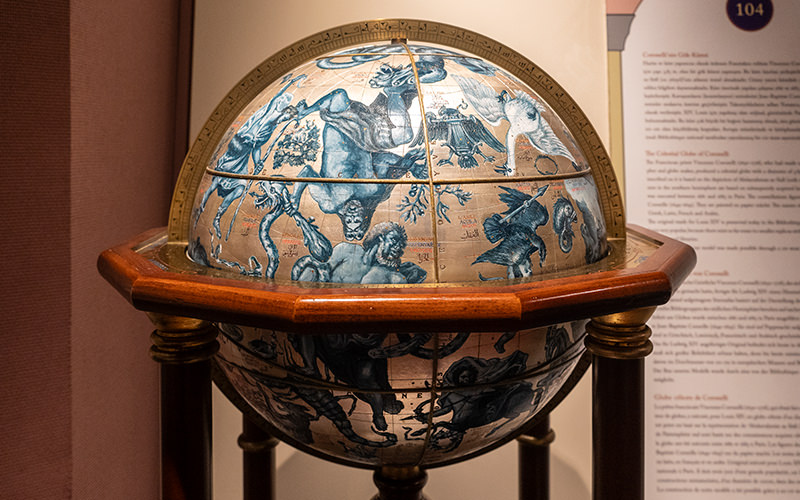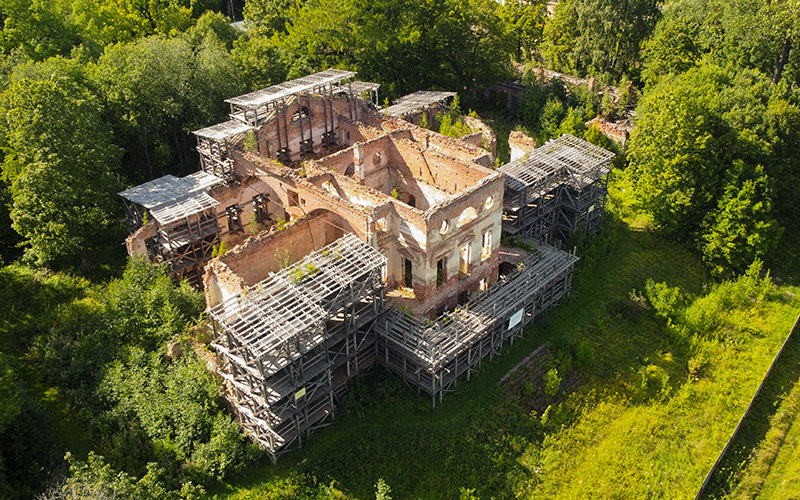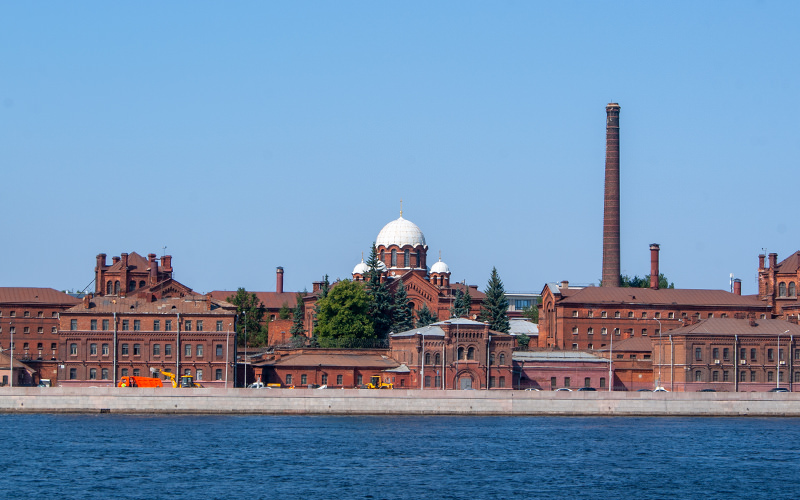This August I visited Almaty, Kazakhstan. While preparing for the trip, I noticed that many Soviet-era structures appear on lists of the former capital’s architectural landmarks. I chose the buildings that interested me most and set off on a city walk. The route is about ten kilometers long. Some sights are quite far from each other, but this walk let me not only see notable Soviet buildings, it also introduced me to the city’s central area.
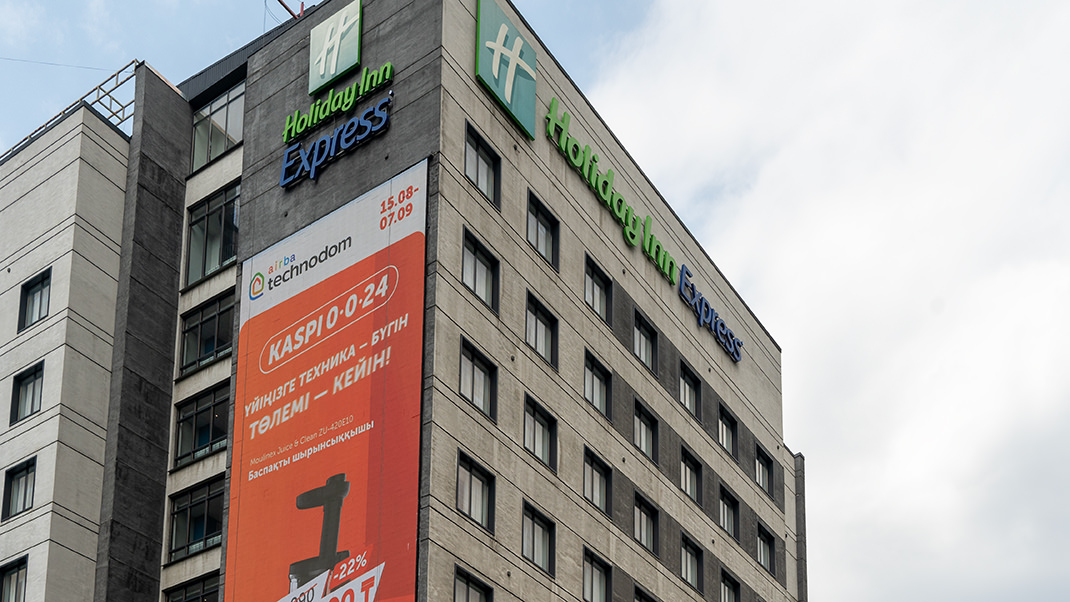
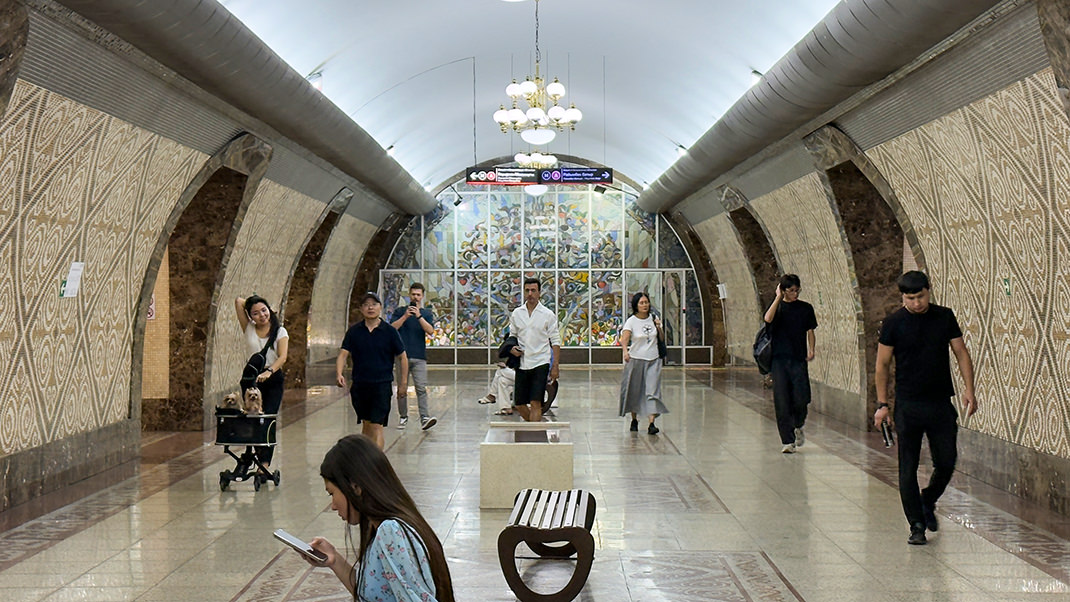
The first stop on my route was the Kazakh State Circus (50 Abay Avenue). It was a 20-minute walk from my hotel; I went on foot, though I could have shortened the way by taking the metro. The building is right by Auezov Theater station.
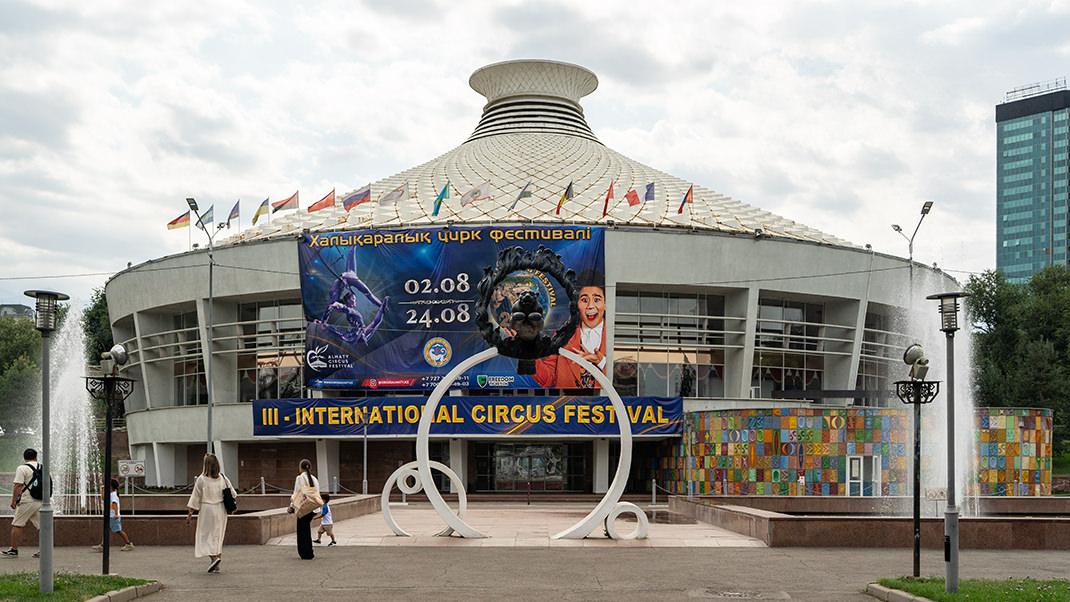
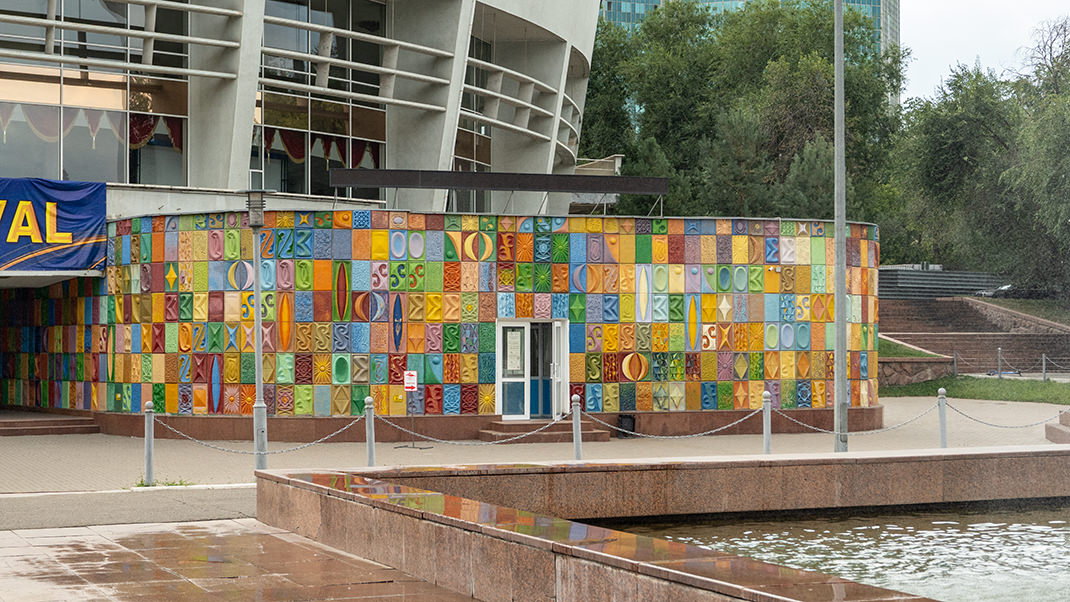
The decision to build the state circus was made in the second half of the 1960s. The structure was to become one of the architectural dominants of a new civic center planned for this area according to the decade’s early master plan.
The initial plan was to erect a standard circus building, the same as in Ashgabat. In practice, significant changes were made—the dome was enlarged and the structure was encircled with a two-tier foyer. This created plenty of free space—for example, enough to accommodate as many as 14 buffets.
The Auezov Theater itself (103 Abay Avenue), which gives its name to the metro station by the circus, stands right across the road. I only saw the stripped facade with empty openings—the building was undergoing major reconstruction. Online sources say the work is scheduled to be completed by 2026.
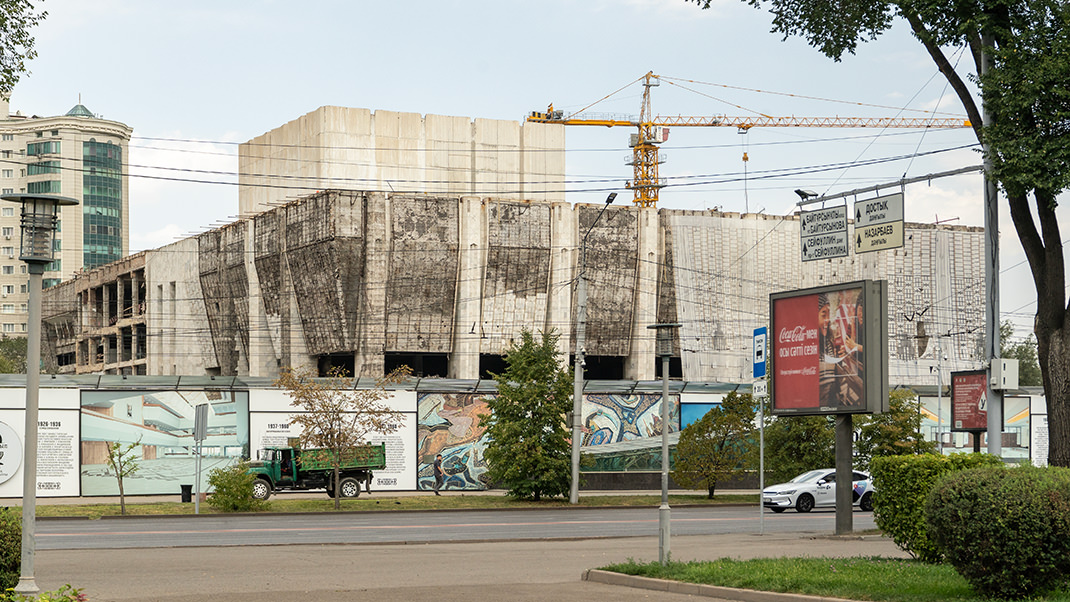
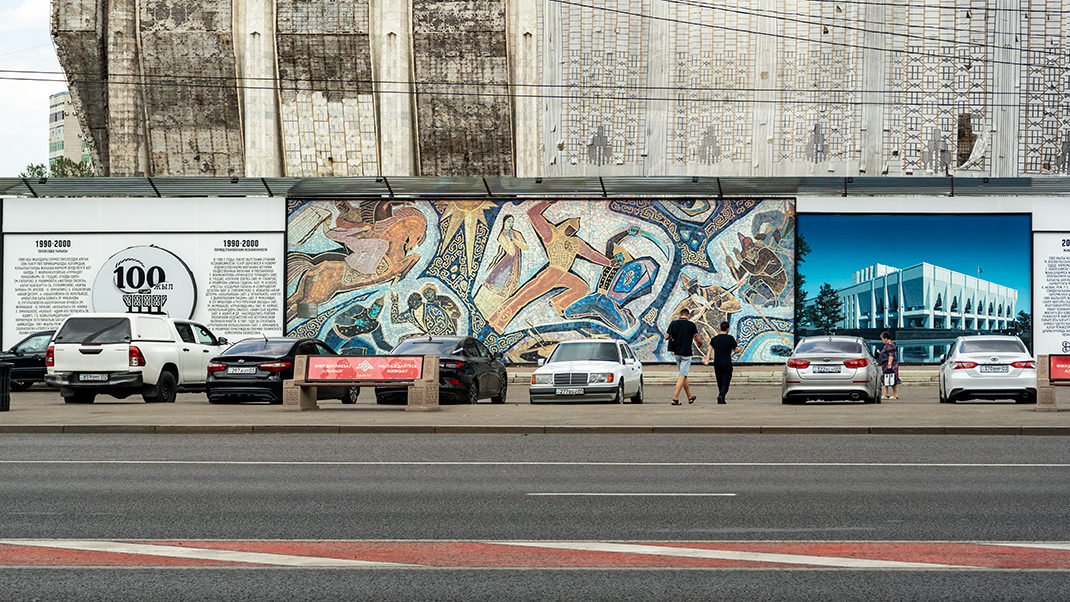
After seeing the circus and theater buildings, I walked to the intersection of Abay and Abylay Khan Avenues, where two Soviet-era buildings stand. The first is the National Library of the Republic of Kazakhstan (14 Abay Avenue). The library was founded over a century ago: its establishment date is the last day of 1910, when a reading-room library opened in the city. In 1931 it became the State Public Library of the Kazakh SSR, and seven years later it was named after A. S. Pushkin.
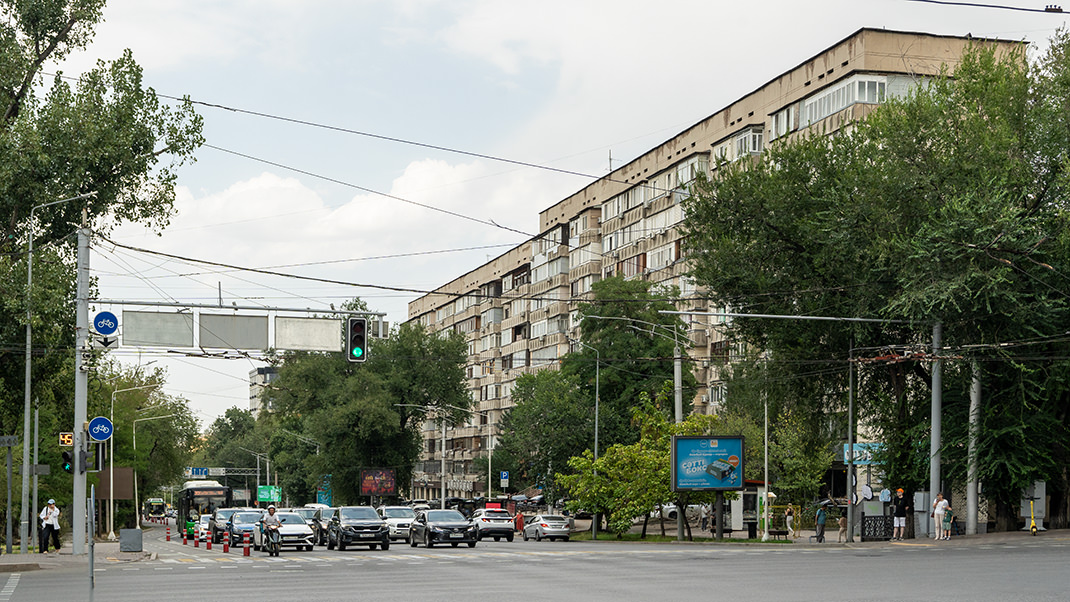
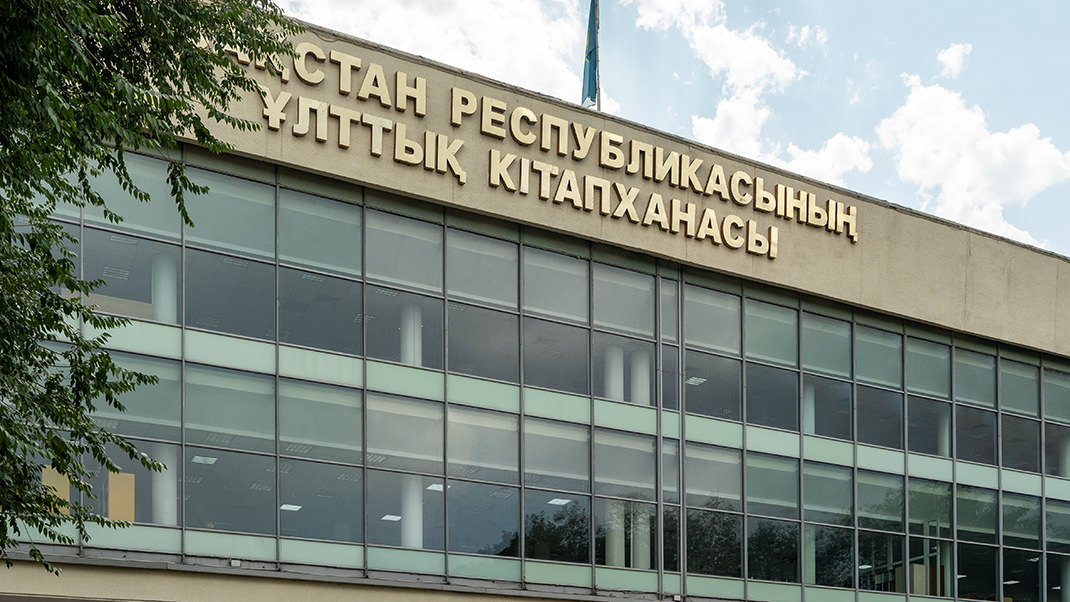
The new library building was constructed in 1962–1970. Guides to Almaty note that the structure was unique—libraries with such transparent facades existed not only nowhere else in the country, but nowhere else in the world. Since 2008 the building has been listed as a monument of history and culture of Kazakhstan.
The second building at the intersection is the National Academic Russian Drama Theater named after M. Y. Lermontov (43 Abay Avenue). The theater was established in 1933, and the poet’s name was added in the 1960s.
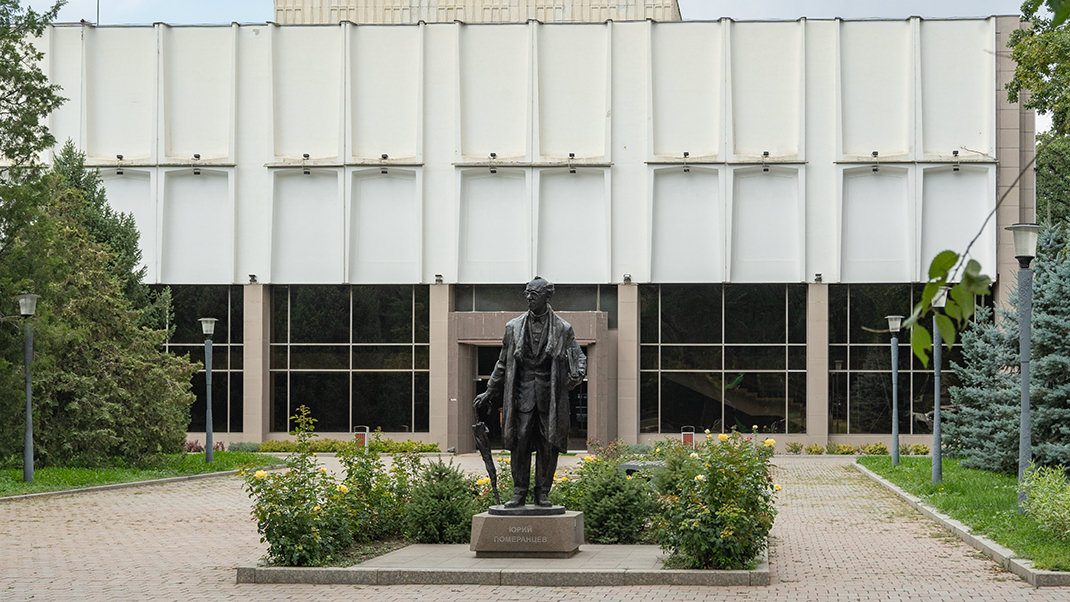
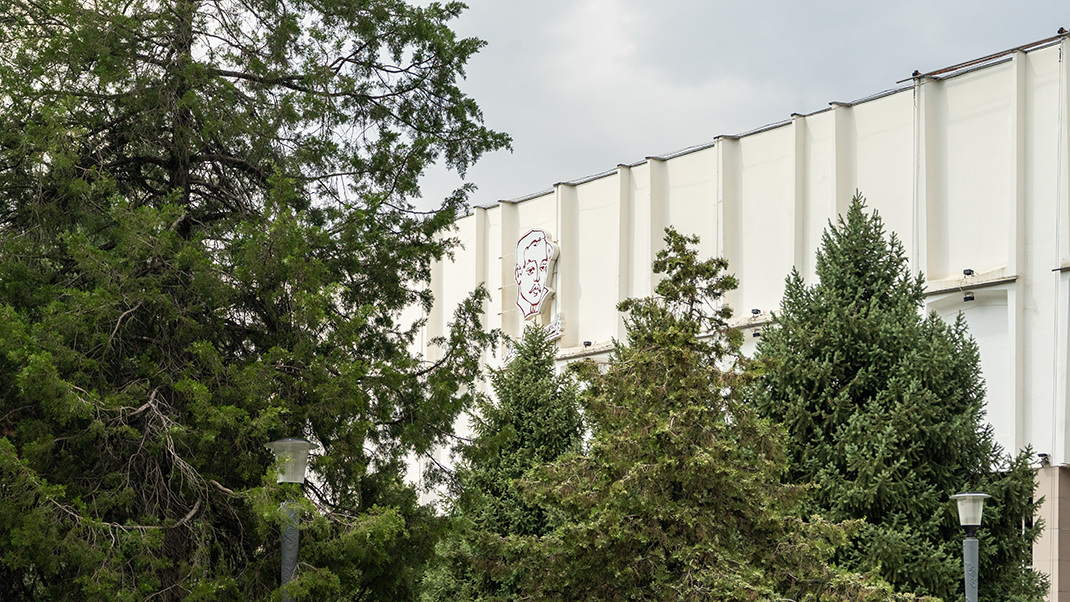
The theater building was constructed in 1964–1969. The project was prepared by Moscow architects; the concept was that the new theater complex should not resemble similar structures from the past.
We return to Zheltoksan Street and head toward the Kazteleradio building (185 Zheltoksan Street), one of the most unusual and interesting structures on my entire walking route. This television studio and control complex was intended for the production of news and documentary programs.
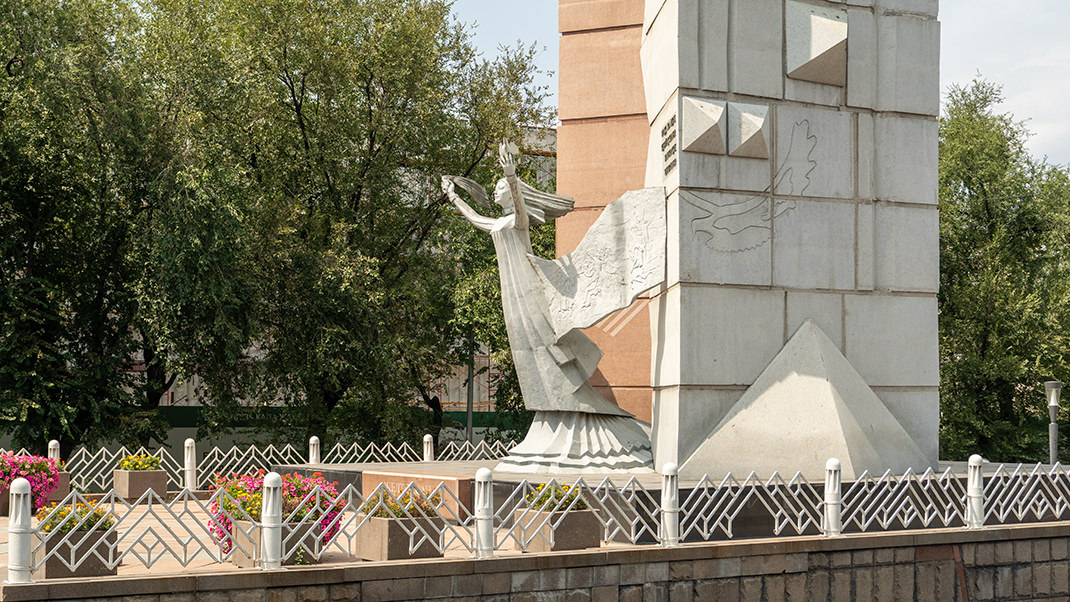
The building was erected in 1973–1983, at the same time as the TV tower on Kok Tobe Mountain. The control complex is a five-story structure with a facade of dark glass panels and a cornice with “stalactites.” Interestingly, the project’s author envisioned topaz-colored, mirror-finish panels, which would have likened the building to a bright Eastern jewelry box—but such finishing materials were not produced in the USSR at the time.
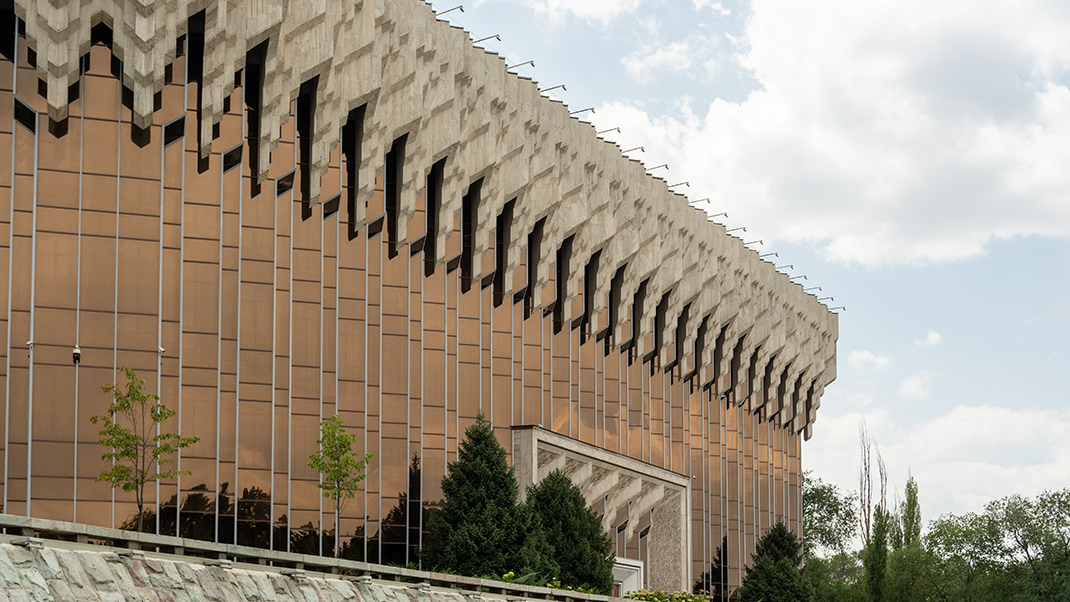
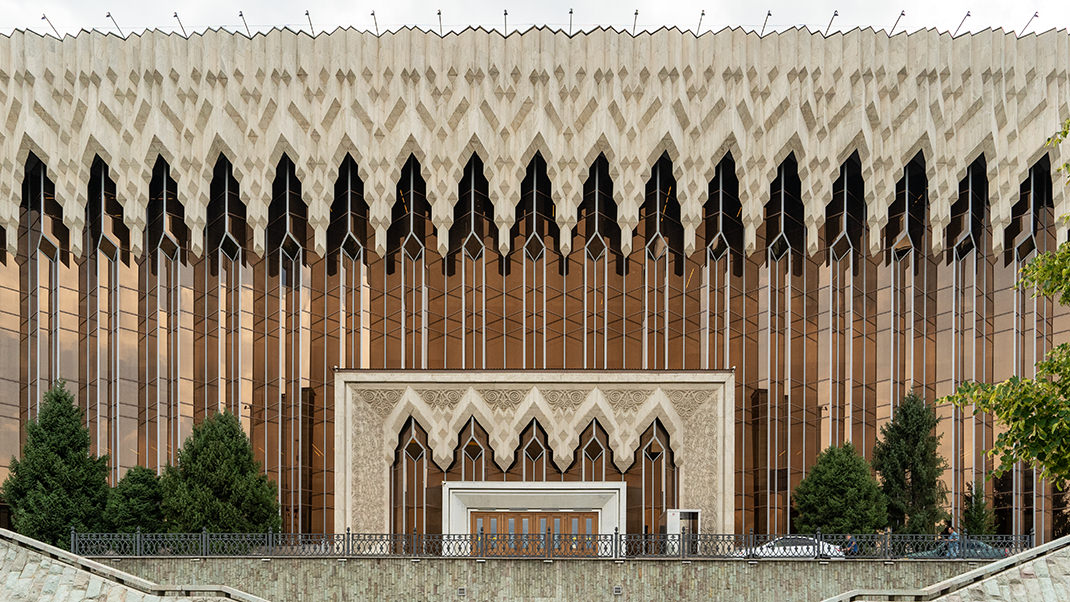
The Kazteleradio building was intended to be the first structure of the New Square (Republic Square)—an ensemble that was to become the new city center. The site and its structures were designed in 1971–1980.
In the northern part of the square there is an elongated area with a promenade and a roadway. According to the map, there should be fountains here, but during my visit this section of the ensemble was fenced off with notices about reconstruction. Similar fences surrounded the central part of the square as well.
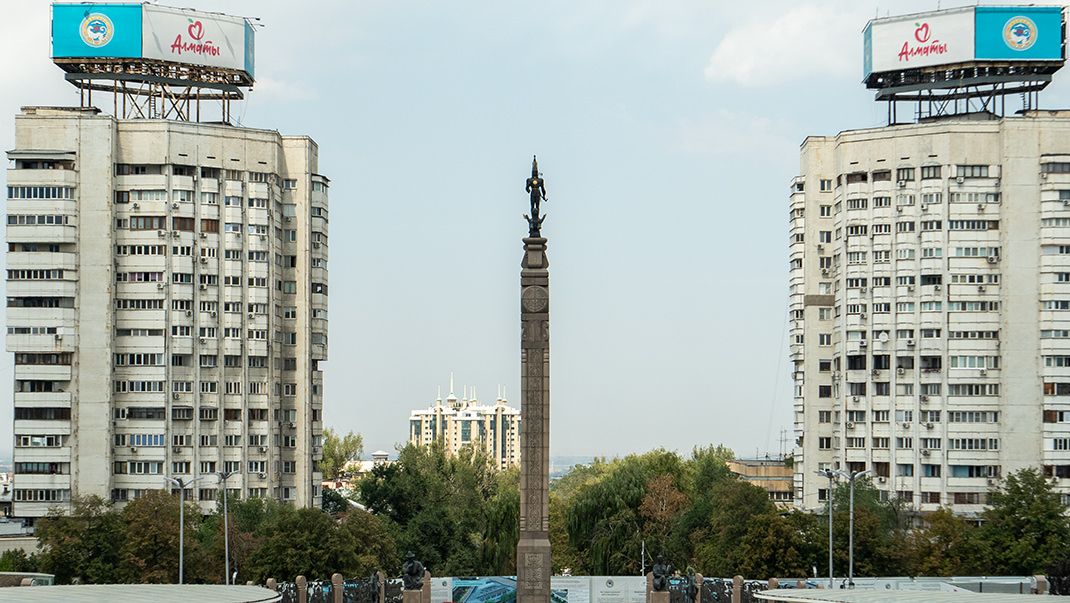
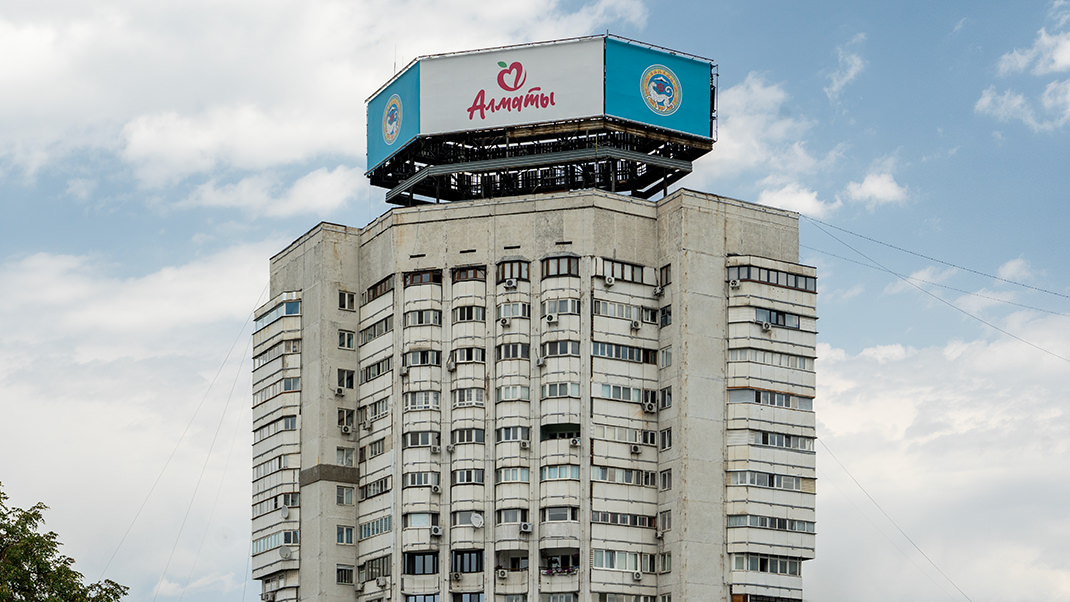
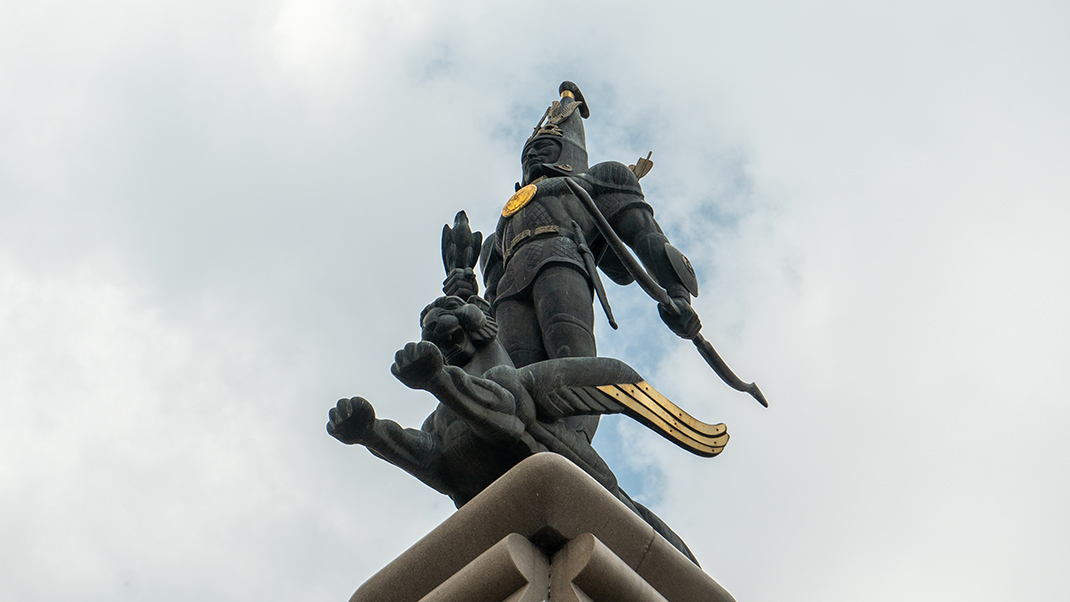
Two large residential buildings open from the promenade toward the square, echoing the motif of ancient Greek propylaea—structures that formed a ceremonial passage or approach to especially significant places.
A bit farther on stands the Monument to the Independence of Kazakhstan, which appeared here in 1996.
The ceremonial ensemble is capped by the former building of the Central Committee of the Communist Party of the Kazakh SSR (Almaty City Akimat, 4 Republic Square). Architecture researchers draw an analogy between this building and the Party’s Central Committee itself: the structure stood as far from the square’s other objects as the Committee did from the people. In my opinion there isn’t much particularly interesting to say about this building, but I couldn’t leave it out of a route through this area.
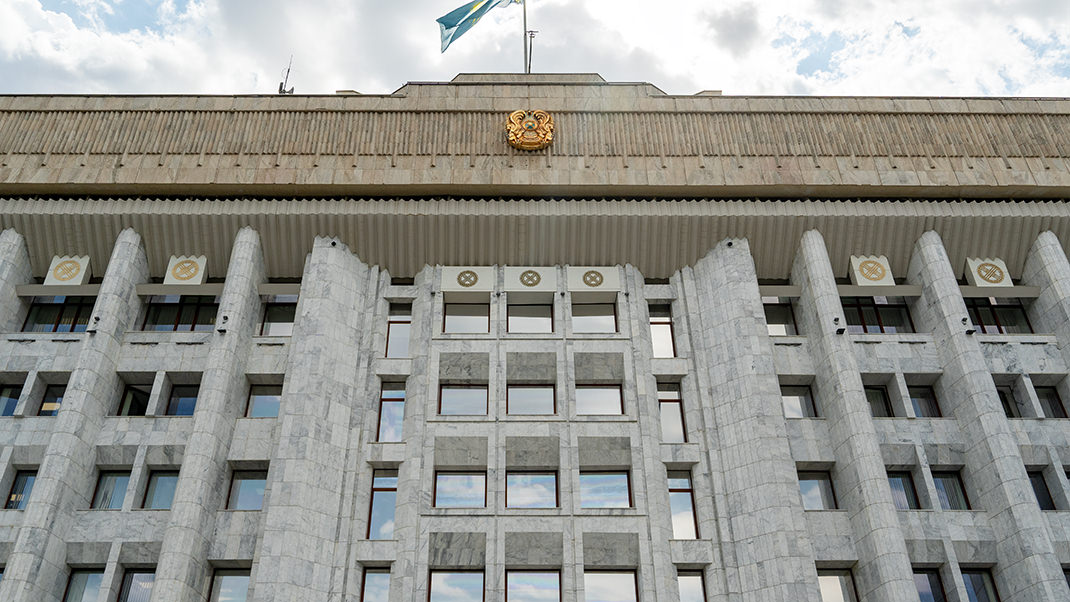
I took quite a lot of photos on this walk, so I decided to split the article into two parts. Next time I’ll tell you about the Kazakhstan Hotel building, the Palace of Schoolchildren, and the “Three Bogatyrs” residential complex.
Have a nice trip!


